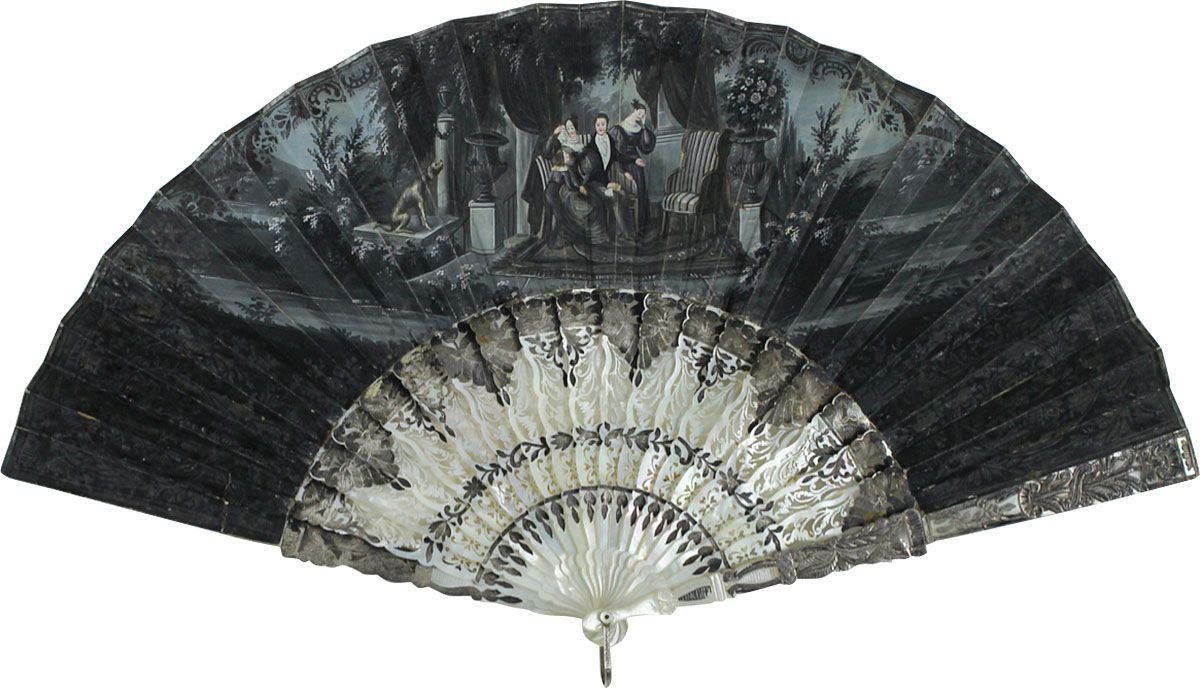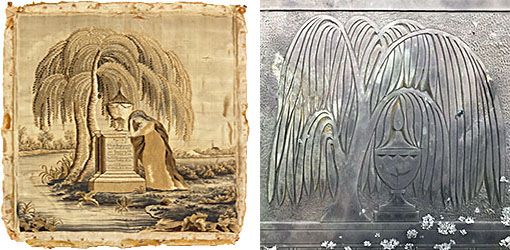To interactively explore this work, tap on its title and on features in the work itself.
Painted paper, mother-of-pearl, silvered guardsticks, 10.6 x 19.9 in., McMullen Museum of Art, Boston College, Hicks Collection, 1988.453
Tap or click on points of interest in the image to learn more ➡

Painted paper
In the nineteenth century gray and black were associated with mourning. The painting of the river landscape vignette on this c. 1830–34 mourning fan is entirely in grisaille (using shades of gray). The black curtains at the window symbolize death and the drooping leaves of the trees suggest weeping.
Family

Dog and urn

The forlorn baying dog seated on the tomb suggests a strong bond with and fidelity to his dead master. Behind the tomb, the urn on the festooned pedestal is a neoclassical symbol of mourning, representing the vessel containing the ashes of the dead. The use of this symbol persisted during the Victorian era and often appears on carved gravestones of the period.
Flowers
This vase nearest the empty chair holds a bouquet of white flowers—possibly chrysanthemums—which were often associated with gravesites.
Guardsticks

These mother-of-pearl guardsticks have been intricately carved and incised; the stylized flowers could be poppies, long associated with sleep (because of the opium sedative), peace, and death (blood-red poppies were offerings to the dead in the classical world).

